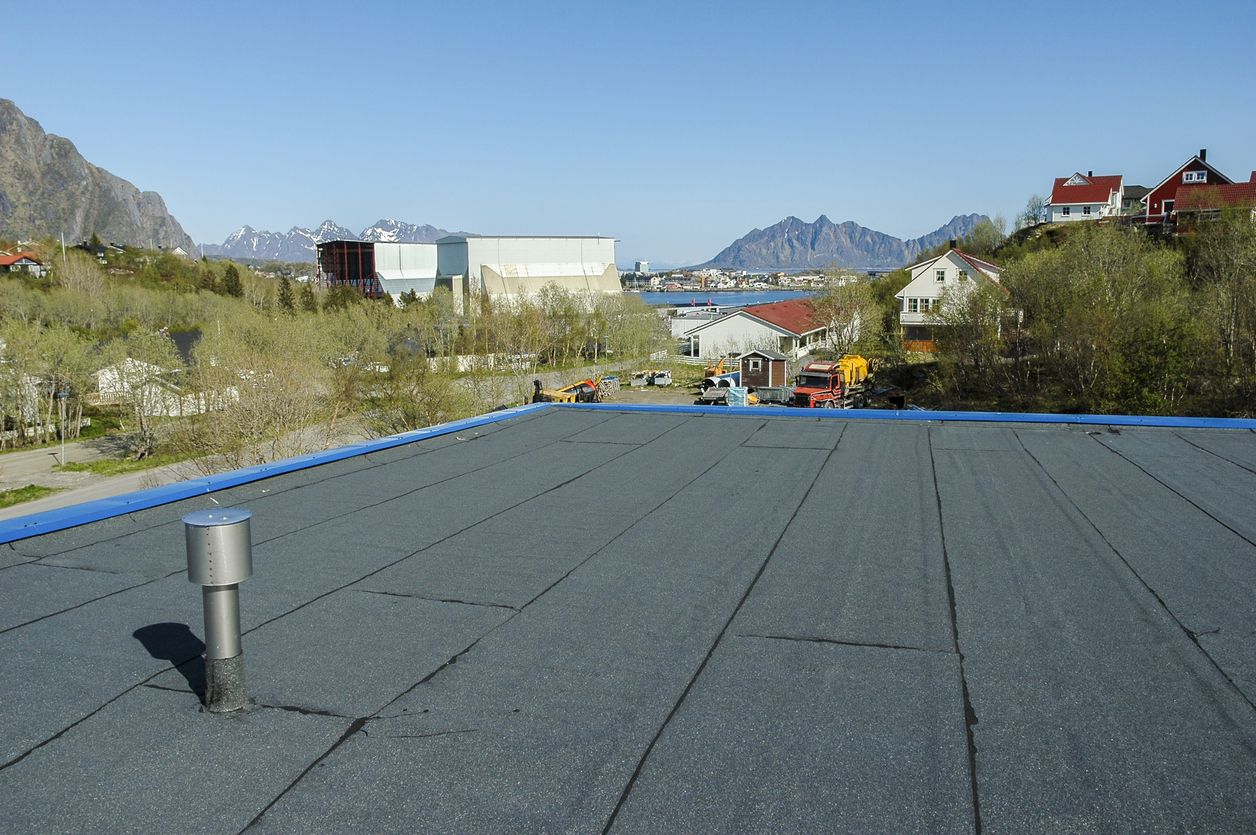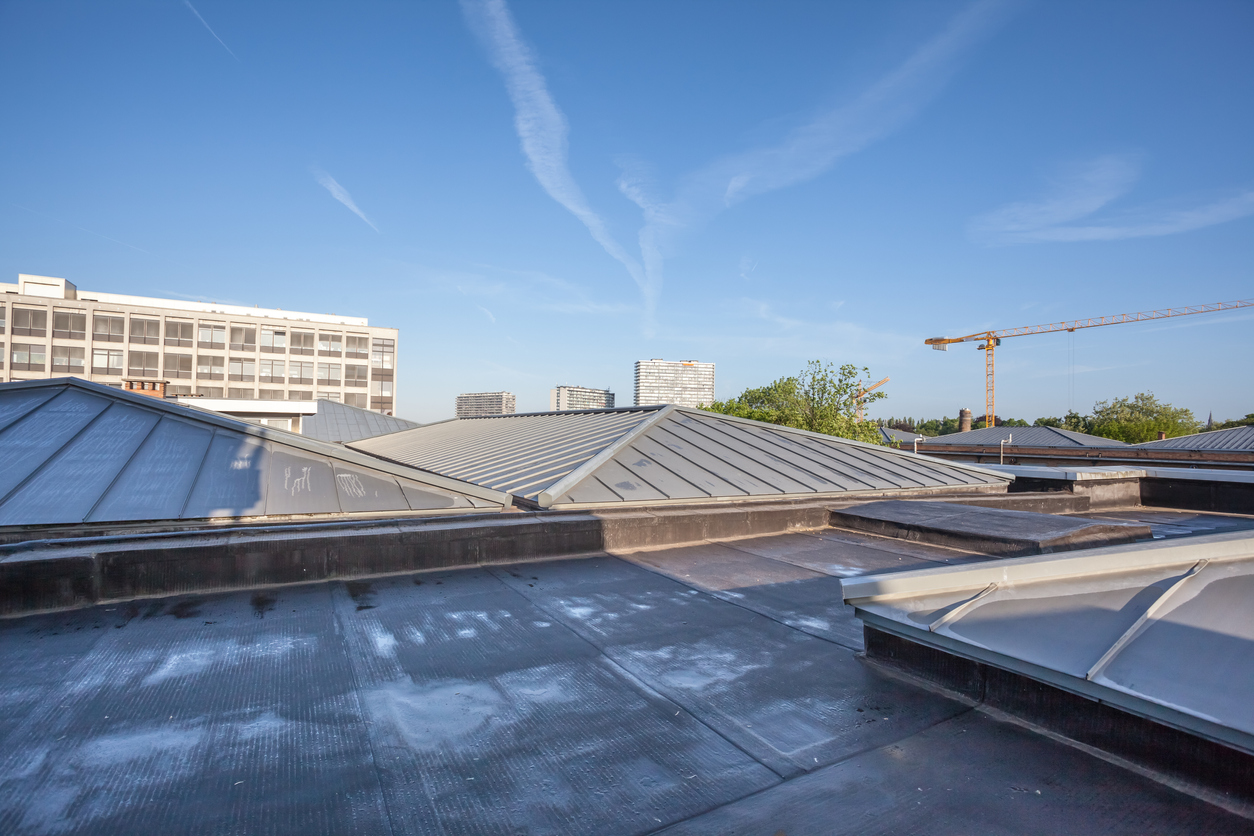Anywhere you go in North America, you can see flat roofs. This style of roofing tops shopping malls, warehouses, apartment buildings, hotels, office buildings, medical institutions and educational buildings. For buildings with a large footprint, flat roofing typically works best. It is easiest to install and serves multiple purposes, such as providing a flat surface for HVAC equipment. You may have noticed that flat roofs are less common on residential buildings, however. Below, we explore why this is true, according to City Roofing & Exteriors.
Why is flat roofing less common on residential buildings?
Commonly called low-slope roofing by builders, flat roofs are not as common on residential buildings in the U.S. and Canada when compared to commercial construction. This is because flat roofs have some drawbacks for homeowners, in regard to weather and maintenance. For example, low-slope roofing collects water after rainstorms or snowfall. It does not immediately shed the water like a pitched roof does.
Although water collection is common on flat roofs, there are methods of improving the water shedding. Builders add a slight slope to what looks like a flat surface, directing water from rain or snow to drainage points. They also use waterproofing materials to prevent leaks from standing water or weather forces. This means that modern home builders can choose a flat roof without so much worry experienced by homeowners in the past.
Reasons to Consider a Flat Roof for Your Home
Flat roofs provide a modern aesthetic that complements surrounding views without obstructing them. You can also use the flat roof surface as additional square footage for your home, such as for a rooftop patio or garden. You can equip your home with solar panels, using the flat roof for optimum solar advantage while keeping the panels and other equipment out of view. A flat roof also provides room for placement of your HVAC equipment.
Of course, there are considerations for your flat roof if you plan to use the space for the above purposes. For example, use as an outdoor living space necessitates placement of guardrails and use of building materials that can handle the added weight and traffic.
Roof performance and protection are other reasons to choose a flat roof for your home. Flat roofs prove cost-effective to construct and maintain, often lasting longer than pitched roofs. Quality largely depends on your contractor’s experience in building low-slope roofing. They should also use the proper materials while you commit to routine maintenance and inspections.

Myths of Flat Roofing
One of the most popular flat roof myths is that these roofs are prone to water damage and leaks. But modern flat roofs do not leak any more than pitched roofs when properly installed using the right materials and adequately maintained. To prevent any water-based issues, you simply must engage with a qualified builder. You also need to keep up with routine maintenance and repairs.
A second big myth of flat roofs is that they are more difficult to maintain or replace when compared to pitched roofs. But today’s flat roofs are more innovative than those of the past, using fewer layers because of advanced waterproofing materials. This means your roofing contractor has fewer layers to repair or remove for replacement.
A Flat Roof Has Multiple Parts
When you look at a flat roof, it appears easily constructed. But a lot of research and development has gone into modern low-slope roofing. Although there are now several different types of flat roofs you can choose from, each has three basic parts.
These flat roof parts include:
- Surfacing
- Reinforcement
- Weatherproofing
Some or all of these materials are sometimes combined into a single product. But for proper functioning, the roof must still have all three of these components in some form.
Besides these basic materials, flat roofs also include a ceiling typically constructed on joists that support the roof deck. Other parts include vapor barrier, insulation and the roof board.
